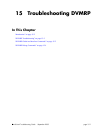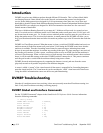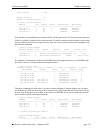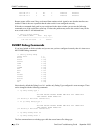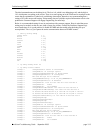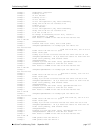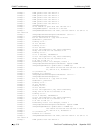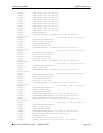
Introduction Troubleshooting DVMRP
page 15-2 OmniSwitch Troubleshooting Guide September 2005
Introduction
DVMRP is used to route Multicast packets through different IP Networks. This is a Dense Mode Multi-
cast Routing Protocol. Dense Mode refers to the network environment the protocol was designed to
service. Dense Mode protocols are designed for LAN environments where there are a lot of users and
bandwidth is plentiful. Sparse Mode Multicast Routing Protocols (Protocol Independent Multicast/Sparse-
Mode PIM/SM is an example) are designed for WAN environments where there are few users and a
limited amount of bandwidth.
Why have a Multicast Routing Protocol in your network? Multicast will not work in a routed environ-
ment. If a switch receives a multicast packet it will flood that packet out all ports in the VLAN, but it will
not forward out the router port. So, in order to have multicast packet across the network you will have to
bridge that packet across. This is not an ideal solution. A routed protocol like DVMRP will allow you to
keep your broadcasts domains intact and allow the multicast packets to go to the IP networks that need that
traffic.
DVMRP is a Flood/Prune protocol. What that means is when a switch has DVMRP enabled and receives a
multicast stream it floods that stream to all ports in that VLAN letting the DVMRP router know that the
multicast is available. Then the forwarding router listens for prune messages, indicating that certain
devices do not need that multicast. It can then stop sending to that port. If a prune message is not received,
the flooding will continue. If, after a prune, a multicast router receives an IGMP join for that multicast it
will send a Graft message. When a switch receives a Graft message for a multicast stream it does not know
about, it will forward that message to the other DVMRP switches connected to it. This process continues
until the graft reaches a switch with the multicast already being sent to clients.
DVMRP forwards multicast datagrams by computing the shortest (reverse) path tree from the source
(physical) network to all possible recipients of the multicast datagram.
A router is called a “parent” of the virtual network if that router is responsible for forwarding datagrams
onto that virtual network. The Virtual network can be considered a “child” virtual network of that router.
Using the child’s information the router can do Reverse path Broadcasting.
DVMRP Troubleshooting
Note that if a multicast stream is not working, it does not necessarily mean that IP multicast routing is at
fault. Verify that IP multicast switching is working properly.
DVMRP Global and Interface Commands
See the “DVMRP Commands” chapter in the OmniSwitch CLI Reference Guide for more information
about the following commands:
-> show ip dvmrp
DVMRP Admin Status = enabled,
Flash Interval = 5,
Graft Timeout = 5,
Neighbor Interval = 10,
Neighbor Timeout = 35,
Prune Lifetime = 7200,
Prune Timeout = 3,
Report Interval = 60,
Route Holddown = 120,










